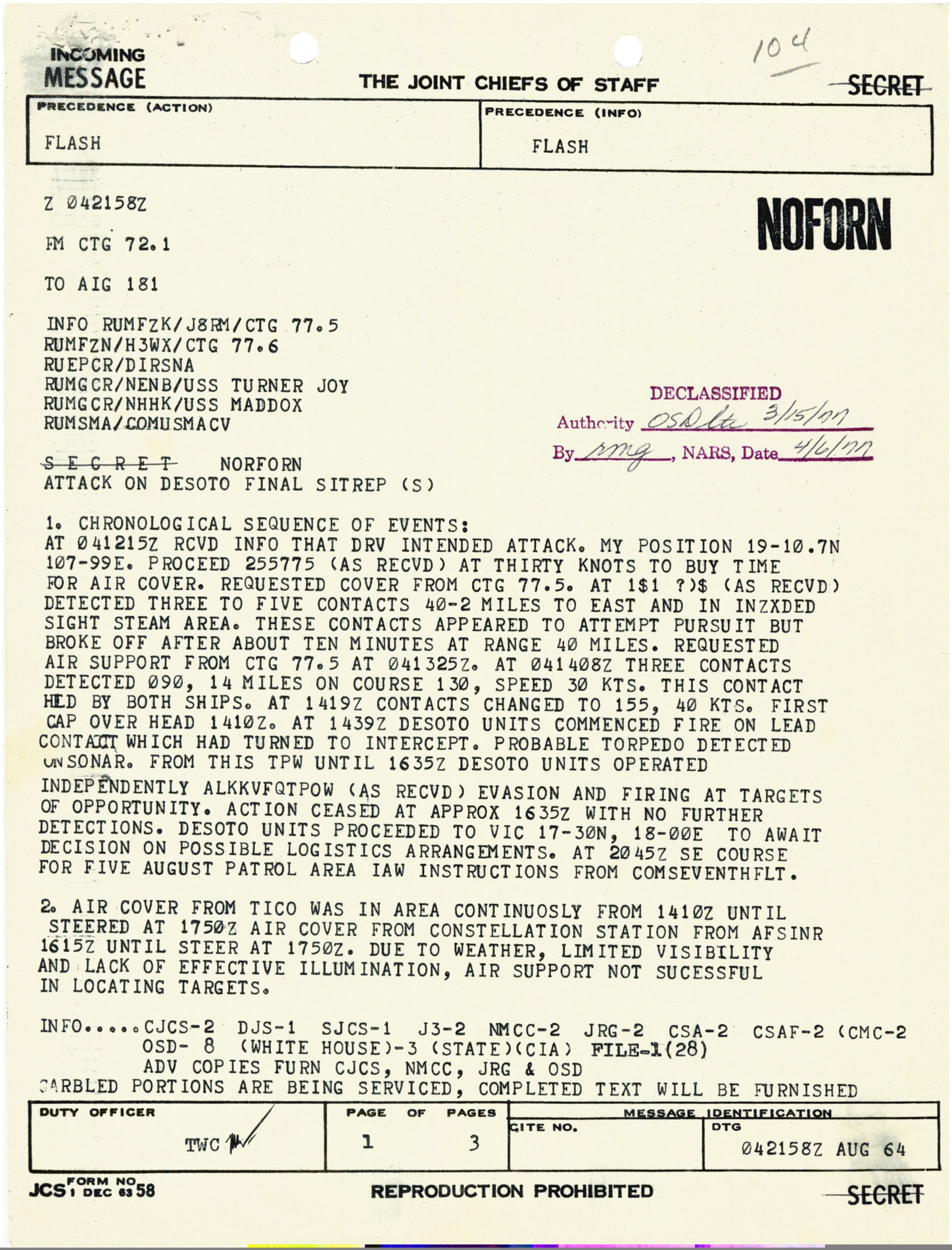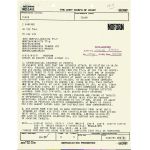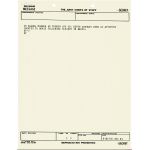Flash Cable About the Attack on the USS Maddox
8/4/1964
Add to Favorites:
Add all page(s) of this document to activity:

Add only page 1 to activity:
Add only page 2 to activity:
Add only page 3 to activity:
The commander of Navy Task Group 72.1 filed this report – sent as "Flash" priority – containing a chronology of the reported second attack by the North Vietnamese on the destroyer USS Maddox while it was on Desoto Patrol in the Gulf of Tonkin on August 4th. It also details the response by the Maddox and the USS C. Turner Joy.
Two days earlier – in the first Tonkin Gulf incident – North Vietnamese torpedo boats were spotted and attacked the destroyer USS Maddox. The Maddox was conducting electronic eavesdropping on North Vietnam to assist South Vietnamese Army (ARVN) commando raids on North Vietnamese targets, but that wasn't publicly known at the time. (Historians now suspect the North Vietnamese boats had set out to attack an ARVN raid in progress when it encountered the Maddox.)
Then on August 4, the USS Maddox captain reported that he was “under continuous torpedo attack.” But he later cabled “freak weather effects on radar and overeager sonarmen may have accounted for many reports.” Defense Secretary Robert McNamara did not report the captain’s doubts to President Johnson, however. (A 2002 National Security Agency report made available in 2007 confirmed the August 2 attack, but concluded the August 4 attack never happened.)
Johnson portrayed confrontations between U.S. and North Vietnamese ships off the coast of North Vietnam as unprovoked aggression when he addressed Congress. With little debate, legislators passed the Tonkin Gulf Resolution, giving Johnson unprecedented power to “take all necessary measures to repel any armed attack against the forces of the United States and to prevent further aggression.” (When contrary information surfaced, many believed Congress had been conned. It was too late.)
Two days earlier – in the first Tonkin Gulf incident – North Vietnamese torpedo boats were spotted and attacked the destroyer USS Maddox. The Maddox was conducting electronic eavesdropping on North Vietnam to assist South Vietnamese Army (ARVN) commando raids on North Vietnamese targets, but that wasn't publicly known at the time. (Historians now suspect the North Vietnamese boats had set out to attack an ARVN raid in progress when it encountered the Maddox.)
Then on August 4, the USS Maddox captain reported that he was “under continuous torpedo attack.” But he later cabled “freak weather effects on radar and overeager sonarmen may have accounted for many reports.” Defense Secretary Robert McNamara did not report the captain’s doubts to President Johnson, however. (A 2002 National Security Agency report made available in 2007 confirmed the August 2 attack, but concluded the August 4 attack never happened.)
Johnson portrayed confrontations between U.S. and North Vietnamese ships off the coast of North Vietnam as unprovoked aggression when he addressed Congress. With little debate, legislators passed the Tonkin Gulf Resolution, giving Johnson unprecedented power to “take all necessary measures to repel any armed attack against the forces of the United States and to prevent further aggression.” (When contrary information surfaced, many believed Congress had been conned. It was too late.)
This primary source comes from the Collection LBJ-NSF: National Security Files.
National Archives Identifier: 593267
Full Citation: Cable Regarding the Attack on the USS Maddox in the Gulf of Tonkin; 8/4/1964; Maddox Incident 8/4/64; Operation Pierce Arrow 8/5/64; Vietnam Country Files, 11/22/1963 - 1/20/1969; Collection LBJ-NSF: National Security Files; Lyndon Baines Johnson Library, Austin, TX. [Online Version, https://docsteach.org/documents/document/cable-maddox-attack, April 26, 2024]Rights: Public Domain, Free of Known Copyright Restrictions. Learn more on our privacy and legal page.






